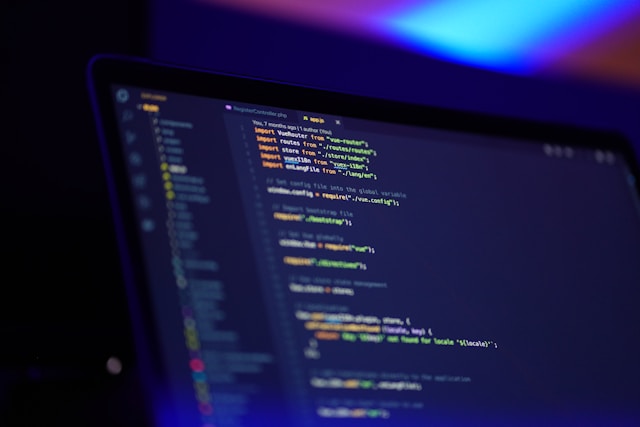An Introduction to the Dart Programming Language and the Flutter Framework - Pub-CE

Embark upon a voyage into the realm of software development with a pioneering tandem: the Dart programming language and the Flutter framework. This dynamic duo has ascended to prominence in the digital sphere, beckoning developers with promises of elegance, efficiency, and cross-platform prowess.
The Genesis of Dart
In the vast constellation of programming languages, Dart emerged from the creative crucible of Google. Conceived to rectify the inefficiencies and complexities inherent in contemporary languages, Dart offers a syntax that is both familiar and refreshingly streamlined. Dart’s lexicon and grammar resonate with those who have traversed the landscapes of JavaScript and Java, yet it forges its own path with distinctive features.
Dart is a statically-typed language, which grants the boon of early error detection during the compilation phase, thereby fostering robustness and reducing runtime anomalies. This characteristic is akin to a vigilant sentry, guarding the integrity of the code. Furthermore, Dart supports both just-in-time (JIT) and ahead-of-time (AOT) compilation. JIT enhances the development process by enabling rapid iterations and hot reloading, while AOT optimization transmutes Dart code into highly efficient machine code, primed for production deployment.
Flutter: A Symphony of UI Brilliance
Flutter, an opulent framework also birthed by Google, orchestrates the creation of natively compiled applications for mobile, web, and desktop from a single codebase. Its hallmark is the Dart language, the sine qua non that imbues Flutter with its remarkable capabilities.
At the heart of Flutter lies the widget-centric philosophy. Widgets, the building blocks of Flutter applications, are immutable and encompass everything from structural elements like buttons and text to stylistic embellishments and layout intricacies. This widget tree, akin to a botanical marvel, flourishes as developers interlace their creative intents with Flutter’s extensive library of pre-fabricated widgets.
Flutter’s renderer, Skia, is a tour de force, capable of rendering complex, high-fidelity interfaces with aplomb. Skia ensures that Flutter apps exhibit a seamless and aesthetically pleasing experience across a plethora of devices, unshackled by the constraints of platform-specific UI components.
The Harmonious Synergy
The symbiotic relationship between Dart and Flutter engenders a development paradigm that is as potent as it is harmonious. Dart’s asynchronous programming model, augmented by features such as async-await and Future, dovetails exquisitely with Flutter’s reactive architecture. This synergy ensures that applications remain responsive and performant, even when tasked with intricate data handling and network operations.
Moreover, Flutter’s hot reload feature is a paragon of developer productivity. By enabling instantaneous updates to the app’s state without necessitating a full recompilation, hot reload transforms the development process into an iterative and fluid experience. This capability is invaluable during the debugging and UI tweaking phases, allowing developers to witness the fruits of their labor in real-time.
Cross-Platform Confluence
One of Flutter’s crowning achievements is its ability to transcend the silos of platform-specific development. By virtue of its single codebase paradigm, Flutter empowers developers to craft applications that are agnostic to the underlying platform, be it Android, iOS, web, or desktop. This confluence of cross-platform compatibility not only expedites the development cycle but also ensures consistency in the user experience.
The Material Design and Cupertino libraries embedded within Flutter further bolster this versatility. Material Design provides a suite of design guidelines and components that epitomize Google’s aesthetic vision, while Cupertino offers the tools to create interfaces that echo the quintessentially sleek and polished look of iOS.
The Ecosystem and Beyond
Flutter’s burgeoning ecosystem is a testament to its growing clout in the developer community. An ever-expanding repository of packages and plugins, coupled with robust support from the open-source community, enriches Flutter’s repertoire. These packages, encapsulating functionalities ranging from state management to device integration, are the building blocks that developers can leverage to accelerate their projects.
In the vanguard of this ecosystem stands Dart’s pub.dev, a treasure trove of packages that extend Dart’s capabilities. This repository is an invaluable resource, offering solutions to myriad challenges that developers may encounter.
Conclusion
In summation, the Dart programming language and the Flutter framework represent a confluence of innovation and practicality in the realm of software development. Dart’s statically-typed, compiled nature complements Flutter’s widget-based, cross-platform prowess, creating a symbiotic ecosystem that is both powerful and elegant. Together, they beckon developers to explore new horizons, crafting applications that are as dynamic and multifaceted as the digital landscapes they inhabit.
Embarking on the journey with Dart and Flutter is akin to navigating an uncharted expanse with a compass that guarantees not only direction but also the promise of discovering new realms of possibility. This dynamic duo, with its blend of sophistication and simplicity, stands as a testament to the boundless potential that lies at the intersection of language and framework.